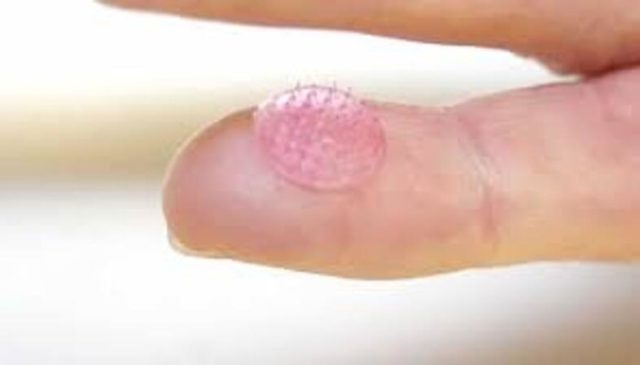Scientists at Stanford University and the University of North Carolina have developed a needle patch that may replace the syringe as a vaccination method.
THE TECHNOLOGY for vaccinating people against diseases is almost the same as it was 50 years ago – a freeze-dried powder vaccine that requires continuous refrigerated storage, liquid reconstitution prior to use, and a needle-and-syringe injection. But thanks to researchers at Stanford University and the University of North Carolina at Chapel Hill (UNC) in the United States, all that could change. They have produced a 3D-printed vaccine needle patch, which, they claim, provides greater protection than a typical vaccine shot.
Applied directly to the skin, the micro-needle patch reportedly delivered an immune response 10 times greater than a vaccine delivered into an arm muscle via a needle jab. It also has other advantages, including easy and painless delivery, and the potential to be self-administered.
“In developing this technology, we hope to set the foundation for even more rapid global development of vaccines, at lower doses, in a pain- and anxiety-free manner,” said Joseph DeSimone, the lead author of the study and co-founder of 3D-printer manufacturer Carbon. “One of the biggest lessons we’ve learned during the pandemic is that innovation in science and technology can make or break a global response.”
The patches are typically formed of tiny 3D-printed micro-needles arranged on a polymer patch, and are applied directly to the skin. The micro-needle prototype is a collection of dozens of tiny needles that are lined up on a small patch. The needles are so tiny that each one is measured in micrometres and is as thin as a human hair.
The vaccine then targets the immune cells present in the skin and generates an antigen-specific antibody response.
Micro-needle patches also deliver logistical advantages. Vaccines delivered via a needle typically require cold storage in fridges or freezers, and usually require a trip to a clinic, hospital or vaccination centre. In contrast, vaccine-coated micro-needle patches can be shipped anywhere in the world without special handling, and as they can be self-administered, would mean fewer trips to hospitals or clinics for patients.
The scientists believe that such benefits could potentially encourage higher vaccination rates in the future.
Substantial research has been undertaken in leveraging 3D printing technologies to produce micro-needle patches in previous years. 3D printing allows greater customisation and repeatability over traditional micro-moulding techniques, and enables the patches to be manufactured on demand. This removes the need for storage space within clinics and laboratories, while side-stepping the high initial tooling costs of micro-moulding methods.
In 2018, for instance, scientists at the University of Texas in Dallas developed a new low-cost method of making micro-needle arrays using an FFF 3D printer, while earlier this year researchers from Rutgers University used a projection micro-stereolithography technique to create 4D printed bio-inspired and programmable micro-needles that enhance tissue adhesion.
Elsewhere, scientists from Arizona State University and the University of Southern California teamed up to produce 3D-printed micro-needle patches inspired by limpets, which could be used to deliver drugs painlessly to patients in the future.
Most recently, a novel device that combines 3D printing, micro-needles and micro-electromechanical systems (MEMS) was produced by the University of Kent and the University of Strathclyde in the United Kingdom, and which could be leveraged to provide controllable transdermal drug delivery.
– Fast Company (SA)








